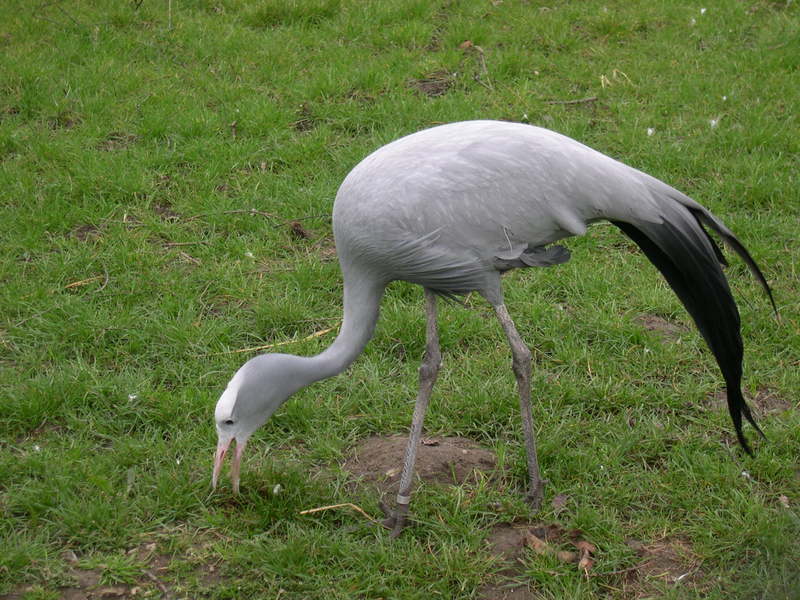Blue Crane
From Wikipedia, the free encyclopedia
Order: Gruiformes
Family: Gruidae
[Photo] Blue Crane (Anthropoides paradisea) in Diergaarde Blijdorp (Rotterdam Zoo). The picture was taken in March 2005 by Magalh??es (http://commons.wikimedia.org/wiki/User:Magalh%C3%A3es). Public domain by the author.
The Blue Crane (Anthropoides paradisea), also known as the Stanley Crane and the Paradise Crane, is the national bird of South Africa. It is a tall, ground-dwelling bird, but is fairly small by the standards of the crane family. It is 1.06 m (3.5 ft) tall and weighs about 4 kg (8.8 lbs). This crane is pale blue-gray in colour with a white crown, a pink bill, and long, dark gray wingtip feathers which trail to the ground.
Blue Cranes are birds of the dry, grassy uplands which feed on seeds and insects and spend little time in wetlands. They are altitudinal migrants, generally nesting in the upper grasslands and moving down to lower altitudes for winter. Many occupy agricultural areas.
Of the 15 species of crane, the Blue Crane has the most restricted distribution of all. While it remains common in parts of its historic range, and approx. 25,700 individuals remain, it began a sudden population decline from around 1980 and is now classified as vulnerable.
In the last two decades, the Blue Crane has largely disappeared from the Eastern Cape, Lesotho, and Swaziland. The population in the northern Free State, KwaZulu-Natal, Limpopo, Gauteng, Mpumalanga and North West Province has declined by up to 90%. The majority of the remaining population is in eastern and southern South Africa, with a small and separate population in the Etosha Pan of northern Namibia. Occasionally, isolated breeding pairs are found in five neighboring countries.
The primary causes of the sudden decline of the Blue Crane are human population growth, the conversion of grasslands into commercial tree plantations, and poisoning: deliberate (to protect crops) or accidental (baits intended for other species, and as a side-effect of crop dusting.
The South African government has stepped up legal protection for the Blue Crane. Other conservation measures are focusing on research, habitat management, education, and recruiting the help of private landowners.
The Blue Crane is a bird very special to the amaXhosa, who call it indwe. When a man distinguished himself by deeds of valour, or any form of meritorious conduct, he was often decorated by a chief by being presented with the feathers of this bird. After a battle, the chief would organise a ceremony called ukundzabela ??? a ceremony for the heroes, at which feathers would be presented. Men so honoured ??? they wore the feathers sticking out of their hair ??? were known as men of ugaba (trouble) - the implication being that if trouble arose, these men would reinstate peace and order.
The Blue Crane is one of the species to which the Agreement on the Conservation of African-Eurasian Migratory Waterbirds (AEWA) applies.
http://en.wikipedia.org/wiki/Blue_Crane
| The text in this page is based on the copyrighted Wikipedia article shown in above URL. It is used under the GNU Free Documentation License. You may redistribute it, verbatim or modified, providing that you comply with the terms of the GFDL. |
|

